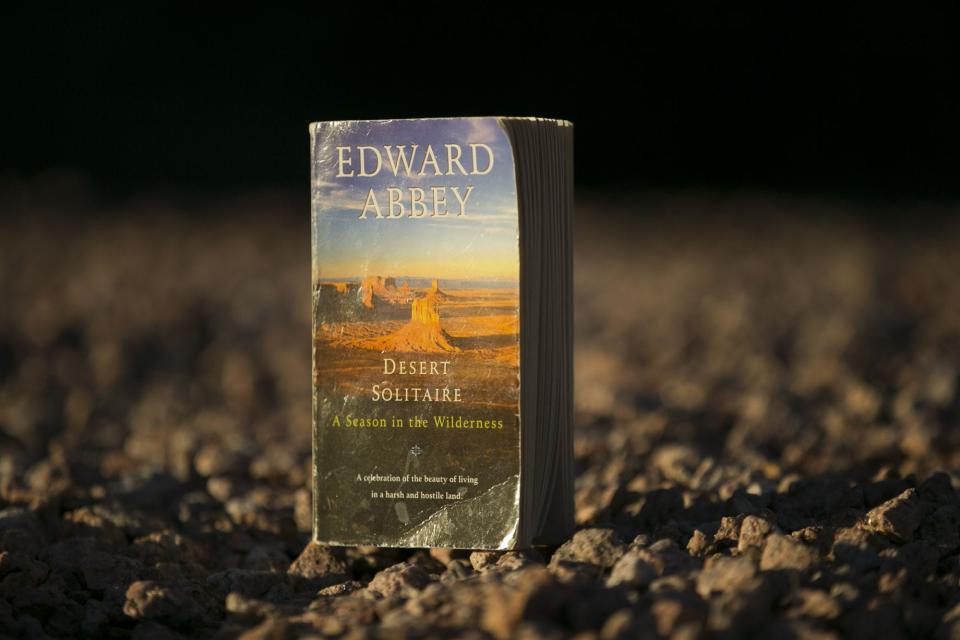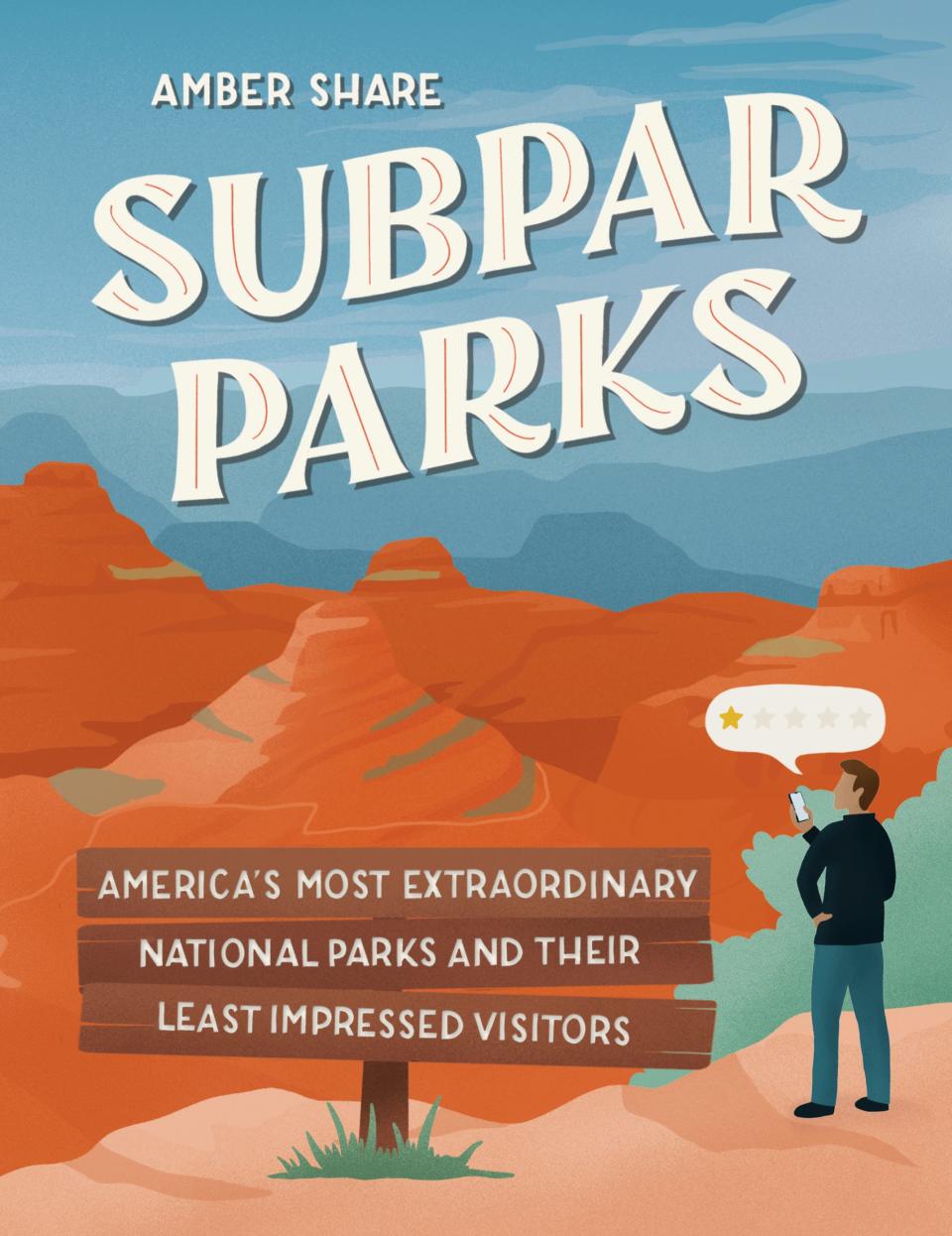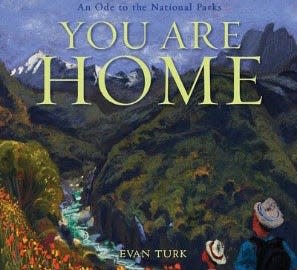Mark Woods: It's the national week for parks and libraries. So here's a list of 16 books.
- Oops!Something went wrong.Please try again later.
The Library of Congress tweeted the other day that it's both National Library Week and National Park Week.
We knew it was #NationalLibraryWeek, but @NatlParkService says it's also #NationalParkWeek. Why not get the best of both worlds? Check out a good book and read it in your favorite park! pic.twitter.com/4MNg3JZo29
— Library of Congress (@librarycongress) April 23, 2023
While these two celebrations are unrelated and seemingly quite separate — one typically brings to mind getting outside, the other going inside — I think it’s wonderfully fitting that they overlap. I might be a bit biased, but I believe parks and books go together.
So with that in mind, I tried to put together a list of 16 national park books — 16, because the National Park System was created in 1916 and celebrated its centennial in 2016.
It isn’t a definitive list by any means. If I did the same exercise again next week, I might have a completely different list.
To some degree, it’s a personal list, because when it comes to books or parks, what comes to mind often is quite personal.
For example, I included “Desert Solitaire” not just because it’s an outdoors classic, but also because I first read it while camping in Arches National Park. I included “Gloryland,” by Shelton Johnson, partly because I read it before returning to Yosemite National Park for the first time since childhood, then spent a memorable day with Johnson, a longtime ranger there.

There are other books that have a special place on my bookshelf — “Bruce Aiken’s Grand Canyon,” for instance, is a coffee table book that I gave to my Mom — but I didn’t include, because they aren’t on the shelves at local libraries.
All of the books on this list have that in common.
And, no, this isn’t just an excuse to give a shameless plug for my book. I didn’t include it on this list. (But I will say it made my day to stumble upon a New York Public Library post titled “A National Parks Reading List” and see one of eight non-fiction books was “Lassoing the Sun: A Year in America’s National Parks.”)
In no particular order …
● “The National Parks: America’s Best Idea,” by Dayton Duncan and Ken Burns.
A worthy book companion to the 12-hour PBS series produced by Duncan and Burns.
● “The Emerald Mile: The Epic Story of the Fastest Ride in History Through the Heart of the Grand Canyon,” by Kevin Fedarko.
The book, like the story it tells, is a wild, fascinating ride. In 1983, faced with massive flooding on the Colorado River — a potentially catastrophic failure of the Glen Canyon Dam — engineers opted to release massive amounts of water. A river guide saw this as an opportunity to take a wooden dory named “The Emerald Mile” and set a speed record through the Grand Canyon.
● “Desert Solitaire: A Season in the Wilderness,” by Edward Abbey.
Abby’s first non-fiction book, from his time as a seasonal park ranger at Arches National Monument (now Arches National Park) in the late 1950s, did more than make me appreciate that part of the country and his love of it. It made me appreciate attempting to write about places we love.
● “Ansel Adams in the National Parks: Photographs from America’s Wild Places.”
There are so many stunning coffee table photo books out there. But it’s still tough to beat a collection of Adams’ black-and-white images (in this case, along with commentary from Andrea G. Stillman, an expert on his work).
● “National Geographic Complete National Parks of the United States.”
I went heavy on storytelling in this list, but if you’re looking for guidebooks there are plenty of options. I like that this one doesn’t just feature the iconic places with “national park” as part of their name. It includes the hundreds of other sites in our National Park System — like, right here in Jacksonville, Timucuan Ecological and Historic Preserve.
Speaking of our backyard park, if you’re looking for a book about part of the Timucuan Preserve and its history, check out “Anna Madgigine Jai Kingsley: African Princess, Florida Slave, Plantation Slaveowner,” by Daniel Schafer.
● “The Wilderness Warrior: Theodore Roosevelt and the Crusade for America,” by Douglas Brinkley.
No national park book list would be complete without at least one about Teddy Roosevelt. The question is which one? Some would argue for Edmund Morris’ trilogy. But its 2,400 pages make Brinkley’s book seem slim — and focused on his conservation legacy.
● “Essential Muir: A Selection of Muir’s Best (and Worst) Writings.”
Muir is often considered the “Father of Our National Parks.” The co-founder of the Sierra Club, he was a prolific writer, penning words that continue to be used for inspiration on coffee mugs and t-shirts. He also has a complex legacy. So what parts of Muir’s writing to read today? Maybe this collection, revised in 2021 (and available through the library as an e-book).
● “Grandma Gatewood’s Walk: The Inspiring Story of the Woman Who Saved the Appalachian Trail,” by Ben Montgomery
The nearly 2,200-mile path now known as the Appalachian National Scenic Trail passes through 14 states and six national parks. In 1955, at age 67, Emma Gatewood became the first female to solo hike the entire trail. While the adventure got national attention at the time, Grandma Gatewood’s story was largely forgotten — until Ben Montgomery retold it in his 2014 book.
● “A Walk in the Woods: Rediscovering America on the Appalachian Trail,” by Bill Bryson
The AT is, among other things, fertile ground for storytelling. Forty years after Grandma Gatewood hiked the trail, Bill Bryson tried. While he didn’t finish his thru-hike, he did eventually complete the 1996 book that a few years ago CNN put atop a list of “funniest travel books.”
● “Cat Tale: The Wild Weird Battle to Save the Florida Panther,” by Craig Pittman. I won’t be doing what one reader did because he found the story of the rescue of the Florida panther from extinction to be so moving — get a panther tattoo on his arm — but I will include the book on my list. (I count this as a national parks book because one of the settings is an NPS site, Big Cypress National Preserve.)

● “Gloryland,” by Shelton Johson
Most of the books on this list are non-fiction. While this one is a novel, the fictional story is built around the true — and often overlooked — history of the Buffalo Soldiers, the African-American troops who were among the first park rangers in Yosemite.
● “The Everglades: River of Grass,” by Marjory Stoneman Douglas.
The 1947 book didn’t just tell the story of a part of Florida that became a national park that year. It helped bring attention to why it was worth preserving land and water that many saw as worthless.
● “Untamed: The Wildest Woman in America and the Fight for Cumberland Island,” by Will Harlan
Looking for a book set in our backyard? Cumberland Island often feels like something out of an epic miniseries, full of sprawling history, beautiful scenery, conflict, controversy and characters. In “Untamed,” Harlan tells the story of one of the modern-day characters, Carol Ruckdeschel.
Or for more about how so much of the island’s history has been shaped by women, there’s Charles Seabrook’s “Cumberland Island: Strong Women, Wild Horses.”
● “Bury My Heart at Wounded Knee: An Indian History of the American West,” by Dee Brown.
I could put together a separate list just for books that attempt to tell the story of Native American history — which, of course, often is an integral piece of national park history. Beyond “Bury My Heart,” there’s “The Last Stand,” by Nathaniel Philbrick; “Empire of the Summer Moon,” by S.C. Gwynne; “1491,” by Charles C. Mann; and more.
● “Subpar Parks: America’s Most Extraordinary National Parks and Their Least Impressed Visitors,” by Amber Share.

An amusing collection of the one-star reviews from park visitors, from Glacier (“Too cold for me!”) to Redwood (“trees and coast are mostly it”).
● “You Are Home: An Ode to the National Parks,” by Evan Turk.

I figured I should include a children’s book. It’s tempting to go with ones that aren’t necessarily about any specific park, but became family favorites after they were bought and read at national parks (“Three Little Javelinas” and “Everybody Needs a Rock”). Or maybe one from the series that I know appealed to my daughter at a certain age but, alas, with none set in our area doesn’t appear to be available at our libraries (“Who Pooped in the Park: Scat and Tracks for Kids”).
But I like the idea of kids looking at beautiful illustrations stretching coast-to-coast from Acadia to Olympic, two parks in my book, and reading — or having someone read to them — a refrain that sums up how I feel when I enter a national park: “You are home.”
“Lassoing the Sun: A Year in America’s National Parks,” by Mark Woods, was published in 2016 and, in addition to being sold in bookstores and online, is available through the Jacksonville Public Library, St. Johns County Public Library, Clay County Public Libraries and Nassau County Public Library.
mwoods@jacksonville.com
(904) 359-4212
This article originally appeared on Florida Times-Union: National Library Week and National Park Week fit together naturally

